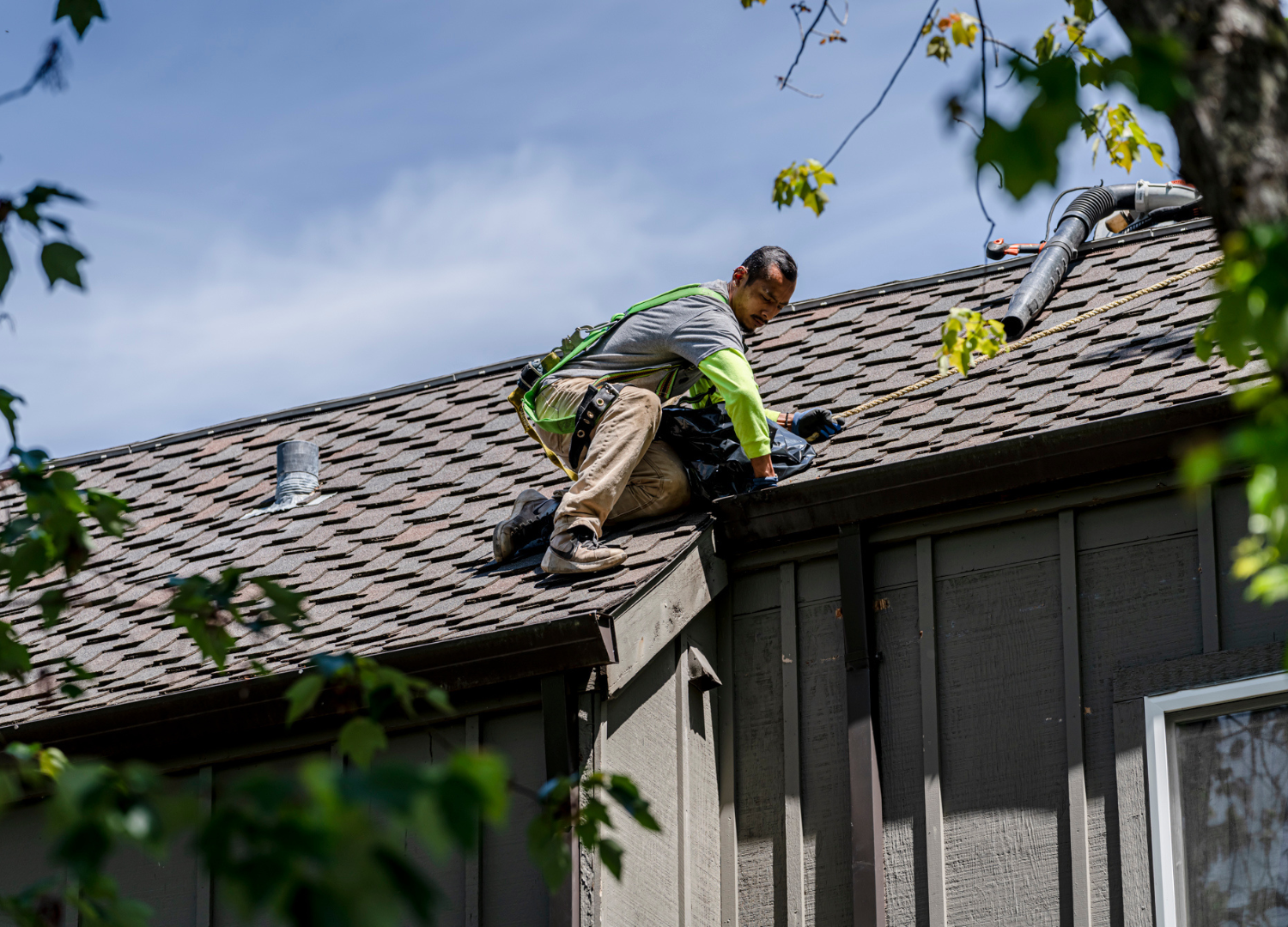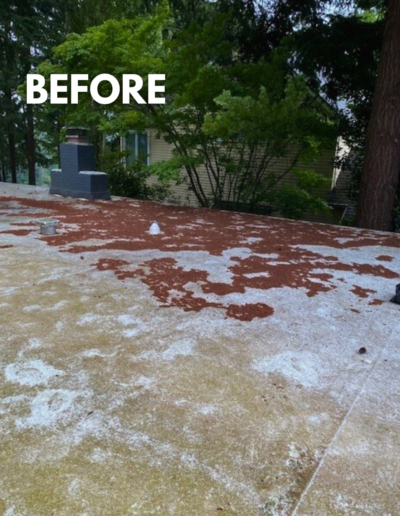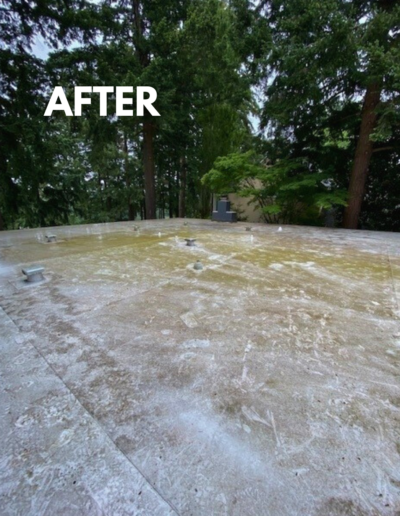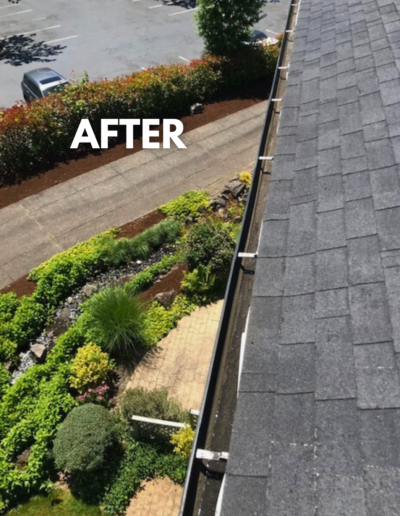Fall: Managing Leaves and Debris
In addition to removing debris, fall is an ideal time to inspect the roof for damage caused by the summer heat or previous seasons. Loose or missing shingles leave your roof vulnerable to water intrusion during heavy rains, making repairs essential before winter.
Fall Maintenance Checklist:
- Clear leaves, twigs, and other debris from gutters and downspouts.
- Ensure downspouts are directing water well away from your foundation to prevent pooling.
- Inspect shingles for any curling, missing, or cracked areas that could let water in.
- Check that gutter fastenings are secure to avoid detachment during storms.
Winter: Dealing with Snow and Ice
Preventing ice dams starts with ensuring your attic is well-insulated and ventilated, which reduces heat loss through the roof and minimizes snow melt. Regularly removing excess snow from your roof and ensuring gutters are free of ice is critical to avoid damage.
Winter Maintenance Checklist:
- Safely remove snow and ice from roofs and gutters.
- Inspect attic insulation and ventilation to reduce the chance of ice dams forming.
- Look for signs of ice buildup in gutters, such as icicles, which can indicate poor drainage.
- Monitor for roof leaks caused by melting snow or ice.

Spring: Preparing for Rain
With spring comes increased rainfall, and clogged gutters can quickly turn a gentle spring shower into a flooding hazard. Overflowing gutters can cause erosion around your property’s foundation and leak into basements or crawl spaces. Additionally, roofs weakened by the weight of snow or damage from winter storms are more prone to leaks during heavy rain.
Spring is the time to do a thorough roof inspection. Look for cracked shingles, damaged flashing, or clogged downspouts. Ensure all water runoff systems are functioning efficiently to direct rainwater away from your home’s foundation.
Spring Maintenance Checklist:
- Clear out any lingering debris from gutters to prevent water overflow during rains.
- Inspect shingles for damage caused by winter freezing and thawing cycles, such as cracks or brittleness.
- Check flashing around chimneys, vents, and skylights to ensure there are no gaps where water could enter.
- Ensure downspouts direct water at least five feet away from the foundation to prevent basement flooding.
Summer: Guarding Against Heat and UV Rays
Gutters, although less likely to be filled with debris during this season, still need regular checks. The sun can also warp gutters, causing misalignment or sagging, which can compromise drainage systems when summer thunderstorms hit.
Summer Maintenance Checklist:
- Inspect roof for signs of sun damage, such as cracked, warped, or missing shingles.
- Ensure that attic ventilation is adequate to reduce heat buildup, which can prematurely age your roof.
- Check that gutters remain properly aligned and securely fastened, especially after spring rains.
- Clean out any nests or small blockages from gutters that may have developed in late spring or early summer.
Check out these before and after pictures of roof and gutter cleaning to see the difference proper maintenance can make for your property:
Year-Round Protection with HOA Services




